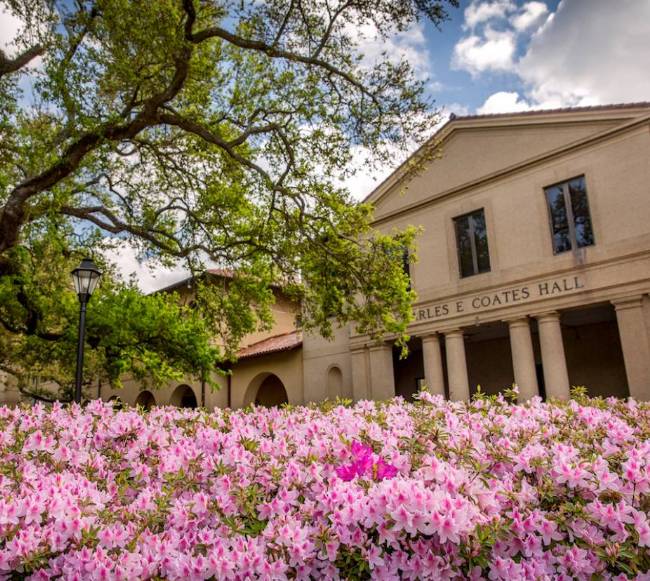LSU Center for River Studies’ Top 5 Wins
February 23, 2023
Over the past five years, nearly 100 students have had the unique opportunity to study and conduct research at the state-of-the-art LSU Center for River Studies. Students from across the U.S. including Massachusetts, Michigan, Wyoming, Texas, Alabama, Mississippi and Louisiana have come to LSU to study at this world-class research facility with renowned professors.
“LSU’s Center for River Studies is a hub located on the Water Campus that facilitates the exchange of ideas and sparks interest in coastal research and the water economy. The opportunity here for students to get hands-on experience running experiments, collecting data and presenting to the people who are managing the state’s coastal resources is like no other.”
Clint Willson, LSU Center for River Studies director and the Mike N. Dooley, P.E. Professor in the LSU Department of Civil and Environmental Engineering
The center is a partnership between LSU and the Louisiana Coastal Protection and Restoration Authority, or CPRA.
“The Center for River Studies is a shining example of what we can accomplish when we come together to work toward a shared goal,” said CPRA Chairman Chip Kline (LSU ’03, Bachelor of Arts, Political Science and Government). “The collaboration between CPRA, LSU and the Baton Rouge Area Foundation has allowed us to build this world-class facility. In the last five years we have been able to reach thousands of individuals, from visiting scientists to school children, to show how we are leading the charge on coastal preservation. I cannot overstate how important this research facility has been to informing our decisions on how to best preserve and protect our coast.”
This year marks the LSU Center for River Studies’ 5-year anniversary. Over the past five years, the center has experienced several wins. Here are the top 5.
1. Students Gain World-class Education
High school, community college, undergraduate and graduate students have all benefitted from the education they’ve received at LSU’s Center for River Studies. They have earned degrees in various disciplines including Civil Engineering, Environmental Engineering, Coastal Environmental Science, Industrial Engineering and Coastal & Ecological Engineering.
2. Alumni Receive Competitive Career Opportunities
Our alumni are employed by engineering firms T Baker Smith, HDR Engineering, Stantec, CSRS and state and federal agencies including CPRA and the U.S. Army Corps of Engineers. While most students stay in- state after graduation, several students have found jobs in the Pacific Northwest, California and Florida.
“Employers are excited about the hands-on educational opportunities our students have at LSU. Our graduates are marketable, innovative and workforce-ready,” Willson said.
3. Connecting to the World
LSU Center for River Studies has welcomed thousands of visitors including scientists, researchers, educators and students from around the world. It has hosted numerous meetings, workshops, events and trainings for more than 15,000 visitors.
4. Years on the River within Minutes
In addition to multiple calibration and validation experiments, seven 50-year simulations have been run on the LSU Center for River Studies’ Lower Mississippi River physical model. It is one of the world’s largest movable bed physical models. All of the experiments that have been run on the model are the equivalent of over 800 years on the actual Lower Mississippi River. The data collected from the physical model are compared with computer models and validated by data collected in the field as part of a Cross-calibration project with the Water Institute of the Gulf. The product is more accurate information about the water levels and predictions of how sea level rise will change and move sediment down the river thus affecting how much sediment will need to be dredged in the future.
5. Adapting to a Dynamic River and Coast
LSU Center for River Studies researchers collect data on the dynamic hydraulics of the Lower Mississippi River, the dredging required due to the changes in the hydraulics of the river and the way river sediment, or sand, moves that provides information to managers to help with the long-term operations of river sediment diversions.
“The model is an invaluable tool in the fight to save our coast,” said Rudy Simoneaux (LSU ’03, Bachelor of Science, Civil Engineering), CPRA’s chief engineer. “It not only allows us to take real-time data from the field to study how the river is impacting the land, but also to show these findings to the public to stress the importance of our work and how the projects we plan to implement further our goal of coastal restoration.”


